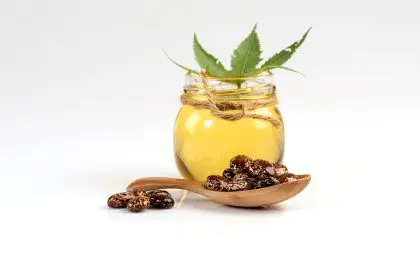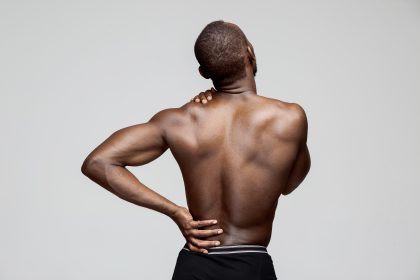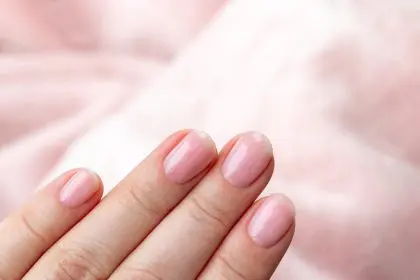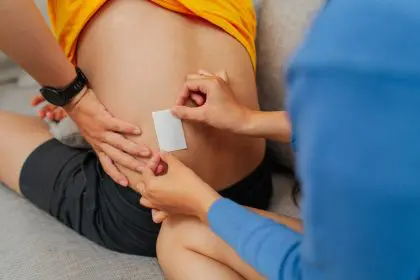Few minor injuries generate as much immediate pain as a finger caught in a closing door. That sudden crush, followed by throbbing pain and rapid swelling, can turn an ordinary day into a painful ordeal. While these injuries are common, the actions taken in the first minutes and hours afterward can significantly impact recovery time and prevent long-term problems. Understanding the proper response to this painful situation empowers you to minimize damage and speed healing when accidents happen.
Understand what happens during a door jam injury
Before diving into treatment steps, it helps to understand exactly what occurs when a finger gets caught in a door. The anatomy of fingers makes them particularly vulnerable to door jam injuries. Each finger contains three phalanges (bones) connected by joints, all surrounded by ligaments, tendons, nerves, and blood vessels packed into a small area with minimal protective padding.
When a door closes on a finger, the force creates compression injuries to these delicate structures. The nail bed might experience trauma, blood vessels can rupture causing bruising, and in severe cases, bones might fracture or joints dislocate. Even without breaks, the pressure can damage soft tissues and cause significant swelling as blood and inflammatory fluids rush to the injury site.
The severity varies widely depending on factors like door weight, closing speed, and exactly how the finger was positioned. A heavy exterior door creates far more damage than a lightweight interior door. Similarly, a finger caught at the hinge side experiences much greater force than one caught at the opening edge.
Most door jam injuries fall into one of three categories: contusions (bruising), where blood vessels break beneath the skin, causing discoloration, swelling, and pain without structural damage; crush injuries with more significant compression causing potential damage to muscles, nerves, tendons, or bones, often with more extensive swelling and bruising; and fractures or dislocations, the most severe category, involving broken bones or joints forced out of position, requiring immediate medical attention.
Now that we understand what happens during these injuries, let’s explore the six crucial steps to take immediately after jamming your finger in a door.
Step 1: Remove jewelry immediately before swelling increases
The first and potentially most urgent step after a door jam injury involves quickly removing any rings or jewelry from the affected finger. This seemingly simple action can prevent serious complications later.
When trauma occurs to a finger, the body’s inflammatory response begins immediately. Blood flow increases to the injury site, and fluid leaks from damaged blood vessels into surrounding tissues. This process causes rapid swelling that can peak within 30 minutes to two hours after injury.
A ring that fits comfortably on a normal finger can become painfully tight and eventually impossible to remove as swelling progresses. This creates a dangerous condition called ring constriction syndrome, where the ring blocks proper blood circulation. If left unchecked, this restriction can lead to tissue death (necrosis) and potentially permanent damage.
If the finger has already begun swelling, making ring removal difficult, try these approaches:
Apply cold water to reduce swelling temporarily while attempting removal. Use soap, oil, or lotion as a lubricant to help slide the ring off. As a last resort, try the string method: wrap dental floss or thin string around the finger starting at the fingertip and working toward the ring, compressing the swelling and allowing the ring to slide over it.
If these methods fail and the finger continues swelling with a ring stuck, this constitutes a medical emergency requiring immediate healthcare provider assistance. Emergency departments and some urgent care centers have specialized tools to safely cut rings without further injuring the finger.
Step 2: Apply cold therapy correctly to minimize swelling
Cold application represents the most effective immediate treatment for controlling swelling and reducing pain after a finger jam injury. However, the method matters significantly.
The goal of cold therapy (cryotherapy) is to cause vasoconstriction—narrowing of blood vessels—which reduces blood flow to the injured area, limiting the inflammation process. This action helps minimize swelling and the secondary damage swelling can cause to surrounding tissues.
For optimal results, follow these cold therapy guidelines:
Apply cold within the first 5-10 minutes after injury for maximum effectiveness. Use an ice pack wrapped in a thin cloth to prevent direct ice-to-skin contact, which can cause frost injury. If commercial ice packs aren’t available, use alternatives like frozen vegetables, ice in a plastic bag, or even a cold metal spoon. Maintain the cold application for 15-20 minutes at a time—not longer, as excessive cold can damage tissues. Repeat the process hourly for the first 24-48 hours while awake.
Contrary to common practice, avoid submerging the injured finger in ice water for extended periods. While this provides quick numbing relief, prolonged exposure can damage skin and underlying structures, potentially worsening the injury.
The cold therapy approach changes with nail injuries. If the nail bed appears damaged or blood collects under the nail (subungual hematoma), shorter cold sessions may be appropriate to prevent increased pressure from the trapped blood.
Step 3: Elevate properly to reduce blood flow and minimize swelling
Elevation works alongside cold therapy to reduce swelling through a simple principle: when an injured finger is positioned above heart level, gravity helps prevent blood and fluid from pooling in the injured tissues.
For finger injuries, proper elevation involves keeping the hand above elbow level, and the elbow above heart level whenever possible. This positioning creates a downhill path for fluid drainage away from the injured digit.
Effective elevation techniques include:
- While seated, rest the affected hand on pillows stacked on the armrest of a chair, keeping the hand higher than your heart.
- When lying down, place pillows under the affected arm so the hand remains elevated.
- During activities requiring movement, use a sling to maintain elevation while allowing necessary mobility.
- At night, sleep with the injured hand propped on pillows above heart level.
For maximum benefit, combine elevation with the cold therapy described in step two. When used together during the first 24-48 hours, these approaches significantly reduce swelling, pain, and potentially the overall recovery time.
Importantly, elevation should continue beyond the initial treatment phase. While cold therapy typically transitions to other approaches after 48 hours, elevation remains beneficial throughout the healing process, particularly when increased pain or swelling occurs with normal hand positioning.
Step 4: Assess mobility and possible fractures
After addressing immediate swelling concerns through jewelry removal, cold therapy, and elevation, the next critical step involves carefully assessing the injury’s severity. This evaluation helps determine whether emergency medical treatment is necessary.
Begin by gently attempting to move the injured finger, paying close attention to pain levels and motion limitations. Normal movement capabilities, despite pain, generally suggest soft tissue injury rather than fractures or dislocations.
Signs that indicate a potential fracture or serious injury requiring prompt medical attention include: severe, unrelenting pain, particularly when the finger is at rest; obvious deformity of the finger, such as unusual angles or visible bone misalignment; complete inability to bend or straighten the finger joints; numbness or tingling, suggesting nerve involvement; dramatic discoloration beyond simple bruising; and nail detachment or severe damage to the nail bed.
Even without these severe symptoms, certain high-risk scenarios warrant professional evaluation. These include injuries from extremely heavy doors, crush injuries where the finger was caught in the hinge side of the door, and injuries in individuals with conditions affecting bone strength or healing, such as osteoporosis or diabetes.
For children with growth plates still active, professional assessment becomes even more important. Growth plate injuries can lead to long-term finger deformities if not properly treated, yet may not cause the obvious symptoms seen in adult fractures.
If none of these concerning signs are present, at-home management typically suffices for most door jam injuries, with monitoring for any symptom changes over the following days.
Step 5: Provide appropriate pain management
Managing pain effectively after a finger jam injury serves two important purposes: it provides comfort and enables better assessment and treatment of the injured digit. Several approaches offer relief without masking important warning signs.
Over-the-counter pain medications represent the most accessible option, with two primary categories available:
- Acetaminophen (Tylenol) reduces pain perception without affecting inflammation. It typically causes fewer gastrointestinal side effects than anti-inflammatory options.
- Nonsteroidal anti-inflammatory drugs (NSAIDs) like ibuprofen (Advil, Motrin) or naproxen sodium (Aleve) address both pain and inflammation. These medications can be particularly effective for the throbbing pain characteristic of door jam injuries.
For maximum benefit without excessive medication, many medical professionals recommend alternating acetaminophen and ibuprofen according to their different dosing schedules, creating more consistent pain relief. Always follow package directions for dosing and consult a healthcare provider about potential interactions with existing medications.
Beyond oral medications, topical options can provide targeted relief without systemic effects. Over-the-counter analgesic creams containing ingredients like menthol, camphor, or lidocaine offer temporary numbing effects when applied to the injured area. These work best on injuries without broken skin.
Temperature-based pain management continues beyond the initial ice therapy. After the first 48 hours, some individuals find alternating cold and heat therapy (contrast therapy) provides superior pain relief compared to cold alone. Typical contrast therapy involves 10 minutes of cold followed by 10 minutes of gentle warmth, repeated 2-3 times in a session.
For nighttime discomfort, protecting the injured finger from accidental bumping during sleep helps prevent pain disruptions. A simple protective splint or even taping the injured finger to an adjacent uninjured one (buddy taping) provides stabilization during rest.
Step 6: Provide appropriate stabilization without restricting healing
The final immediate step involves stabilizing the injured finger to prevent further damage while allowing appropriate movement for healing. Unlike many injuries where complete immobilization is beneficial, fingers often heal better with controlled, limited motion that prevents stiffness.
Buddy taping represents the most widely recommended stabilization method for most door jam injuries. This technique involves taping the injured finger to an adjacent healthy finger, creating a natural splint that allows some movement while preventing excessive bending or straightening.
For effective buddy taping: Place a small piece of gauze between the fingers to prevent skin irritation. Use paper tape or specialized sports tape rather than adhesive bandages, which can restrict circulation. Wrap the tape around both fingers at the middle portion, avoiding joints if possible. Apply enough tension to provide stability without restricting blood flow. Remove and reapply fresh tape daily, checking for skin irritation. Continue buddy taping for 1-2 weeks for minor injuries, or as directed by a healthcare provider for more severe cases.
For more significant injuries with substantial pain or instability, temporary splinting provides greater protection. Commercial finger splints available at pharmacies offer adjustable support, though even makeshift splints using popsicle sticks padded with gauze can effectively stabilize a finger until professional treatment.
Splinting, unlike buddy taping, typically immobilizes the finger more completely. For this reason, splinting beyond 3-7 days without medical guidance can lead to joint stiffness and prolonged recovery. Consider splinting a temporary measure either for the first few days or until medical assessment.
Regardless of the stabilization method chosen, periodic gentle movement within pain tolerance helps maintain joint mobility and promotes healing. Even with more severe injuries requiring immobilization, most medical protocols now incorporate early controlled motion to prevent complications like permanent stiffness.
Ongoing care and when to seek medical attention
While the six immediate steps outlined above address the crucial first-hour response to a jammed finger, ongoing monitoring and care remain important for proper healing.
Most uncomplicated door jam injuries show significant improvement within 1-2 weeks, with complete resolution within 3-4 weeks. During this recovery period, gradually increasing finger use while avoiding activities that cause sharp pain helps restore function without delaying healing.
Despite appropriate home care, certain developments warrant prompt medical evaluation: worsening rather than improving pain after the first 48 hours; increasing rather than decreasing swelling beyond the first few days; spreading redness, warmth, or the appearance of streaking, suggesting possible infection; development of new numbness, tingling, or color changes in the finger; inability to bend or straighten the finger joints after swelling subsides; pain that persists beyond 3-4 weeks without significant improvement; and any signs of nail growth abnormalities in the weeks following injury.
For injuries involving the tip of the finger or nail bed, longer healing timeframes are typical. Complete nail regrowth after significant injury may take 3-6 months, and permanent changes to the nail appearance can occur with severe trauma.
By following these six immediate steps—removing jewelry, applying cold therapy, elevating properly, assessing for serious injury, managing pain appropriately, and providing proper stabilization—you maximize healing potential after a painful door jam incident. This systematic approach transforms a chaotic, painful moment into a manageable injury with the best possible outcome.

















